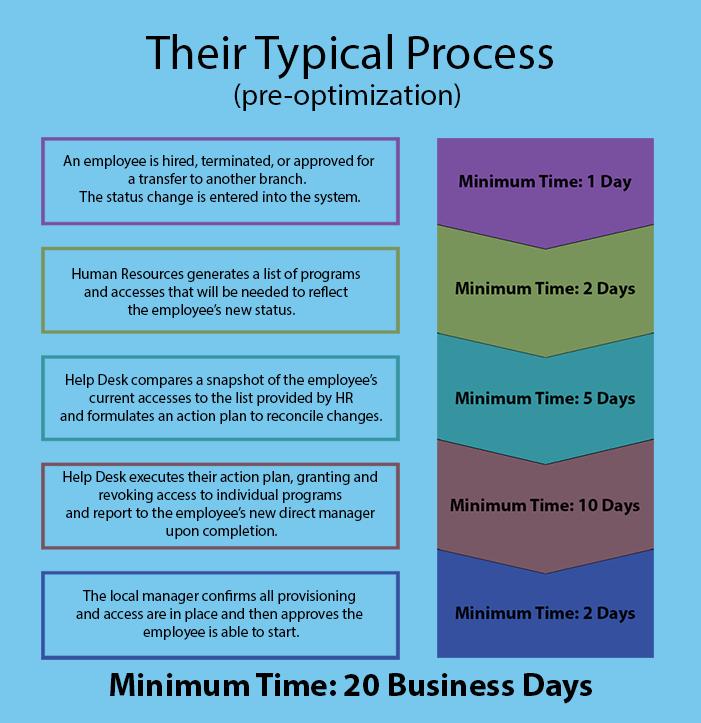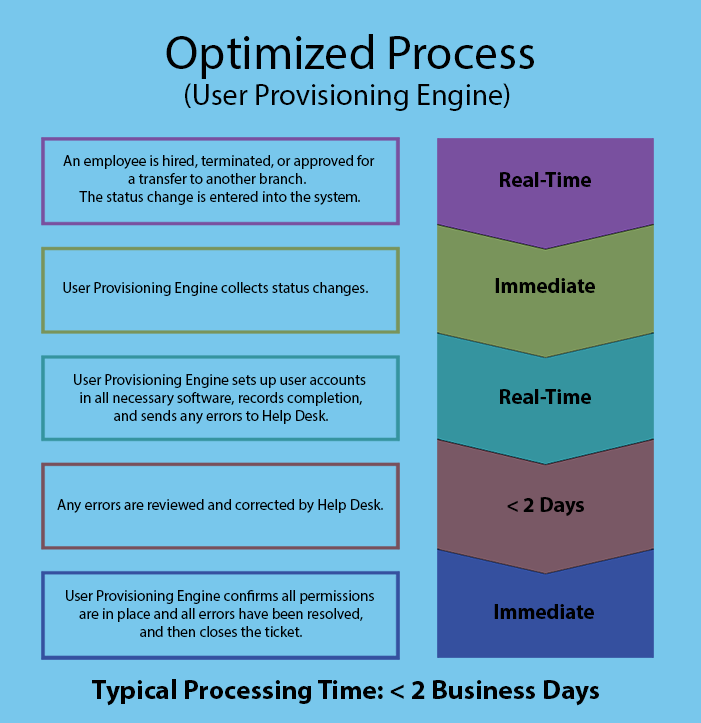
Our client
A large financial institution with high volume of face-to-face customer engagement and a great deal of back-office automation.
Their Issue
Our client had trouble onboarding, offboarding (terminating) and transferring employees between one brick-and-mortar location and another. There was a great deal of software in play, and although the job title might be the same in any physical location, the software these employees used would vary widely from location to location. As a result, there was a four to six week lead time from approval of hiring or transfer to the employee actually being able to work at their new location, as a great deal of the work had to be done manually by their internal Help Desk staff. With over 27,000 employees, this was a serious issue.

Our Solution
We drafted a solution that centralized provisioning for all levels of the client company, and everything that could easily be automated (such as through Active Directory) was done first. This improved efficiency considerably while we focused on more complex fixes. We assigned a developer to implement web-interface based provisioning, which moved us forward towards mass-provisioning with software that had no such functions.
We then built interfaces for the client's server which allowed the User Provisioning Engine to send data about a given employee and activate or deactivate them as needed. The final piece of the back-end code involved the client obtained secondary contracts from their software providers, permitting internal developers or contractors to access functions to provision and de-provision users. While those companies provided no support, they permitted us to use their functions to complete the User Provisioning Engine.
The last part of the project was the creation of a website providing role-based visibility of the provisioning status of each user. This allowed Help Desk to see the progress of individuals through the provisioning process, and to handle any issues as they arose. This site also allowed them to escalate issues they couldn't solve to their management, who were provided with a broader view of the process, allowing them to identify trending issues (such as with a particular service or function) and either provide guidance to their direct reports or bring the problem to their VP. VPs themselves had a further abstracted view which permitted them to see overall progress at a glance, and also drill down further to identify potential problems.
Giving VPs to access to this data increased efficiency significantly. The client's departments worked independently, and interdepartmental work required VP approval. If something needed Developer support, the VP of Help Desk had to approve the interdepartmental cooperation. Creating this interface cut the delay from Help Desk detecting the problem to Development being brought in to consult from five business days to as little as an hour.
Overall, the system we developed shortened time to onboard, offboard, or transfer from four to six weeks to at most six business days, and freed up several hundred Help Desk employees to work on other critical items, saving approximately 25,000 person-hours each month.

Technologies
|
|